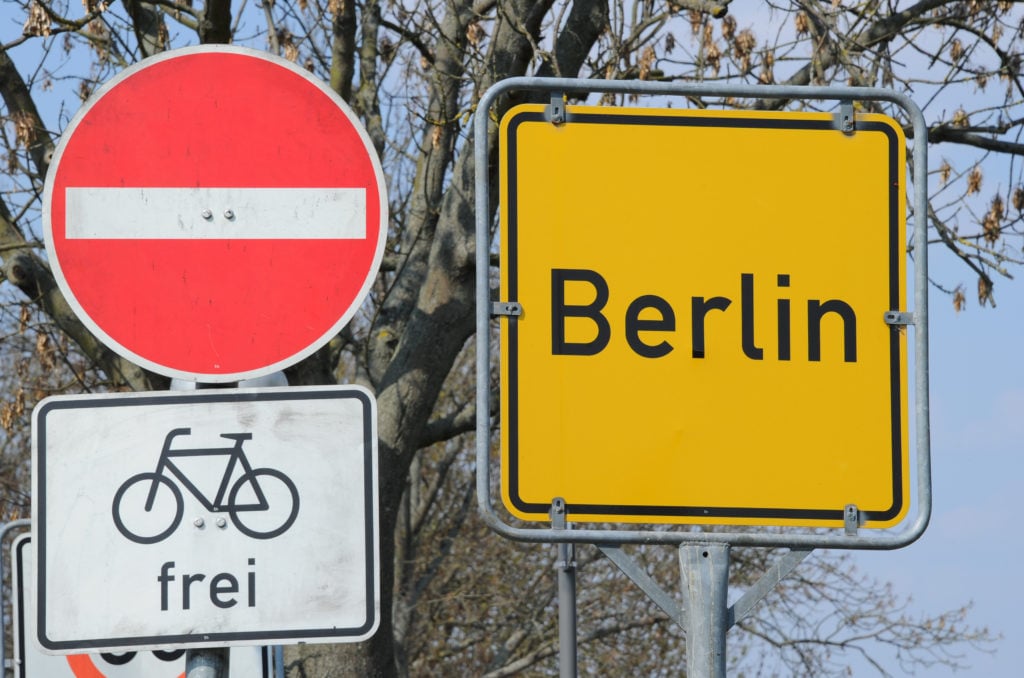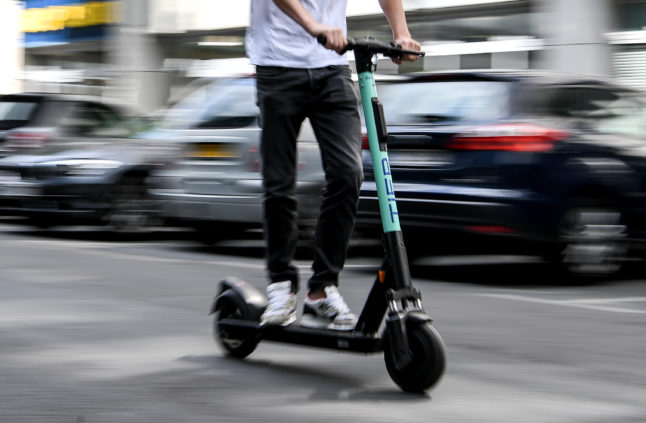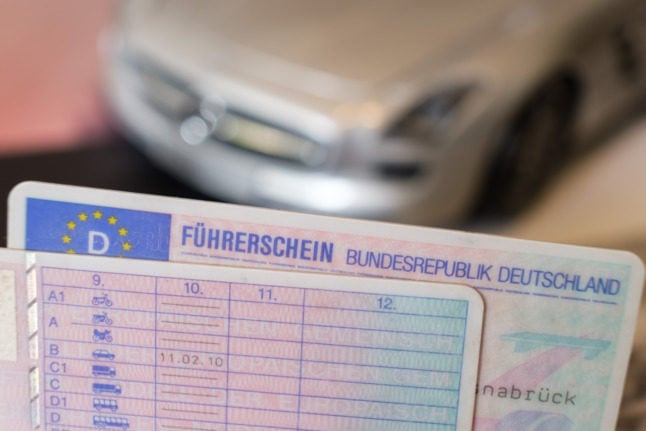Germany is currently the world’s second-largest market for e-scooter rental after the USA, which might explain why you have the feeling that you’re seeing the electric vehicles everywhere these days, at least in cities.
According to a recent survey by ADAC,15 percent of people in Germany aged 16 and over regularly use e-scooters. Of these, 45 percent own their own scooter, while 55 percent rent the vehicles from sharing services.
Here are the rules for driving an e-scooter that you need to know.
Who can drive an e-scooter?
Anyone over the age of 14 can ride an electric scooter and you don’t need to have a driving license to use one. However, many of the traffic rules for motorists also apply to e-scooter riders, and misbehaving on a scooter could end up costing you points on your driving license or even getting you a driving ban.
READ ALSO: Driving in Germany: Eight German road signs that confuse foreigners
Can more than one person ride an e-scooter?
No. Only one person is allowed to ride a scooter and if you are caught riding in two, you will get a €10 fine.
Although it might be fun, riding side by side on two scooters is also not allowed and can be punished with a fine of between €15 and €30. Instead, you and your friends have to ride in single file.
Where can you ride an e-scooter?
E-scooters are principally allowed on bike paths and in bike lanes and you can only drive them on the road if there is no bike lane available. If you do drive on the road, you must keep as far to the right as possible and you are not allowed to ride in bus lanes.
It’s also forbidden to ride an e-scooter on the motorway – doing so will get you a €20 fine.
Riding an e-scooter on the pavement, in pedestrian-only zones, or in one-way streets against the direction of traffic is also not allowed and can land you a fine of between €15 and €30.
However, e-scooters are allowed on one-way or no-entry roads which have a “cyclists free” sign.

Which traffic light rules apply to electric scooters?
E-scooter riders have to abide by traffic lights just like motorists, and the fine for ignoring a red light on an e-scooter is between €60 and €180.
However, if there is also a traffic light for bicycles, e-scooter riders can follow this one instead.
Is there an alcohol limit for electric scooters?
Yes, the same alcohol limits for motorists apply to electric scooter riders.
This means that anyone who drives with a blood alcohol level of between 0.5 to 1.09 is liable for a fine of €500, a 1-month driving ban and 2 points on their driving license.
It’s a criminal offence to ride an electric scooter with a blood alcohol concentration of at more than 1.1, as is causing an accident with a blood alcohol level of more than 0.3.
Under 21s must be completely alcohol free – with a blood alcohol level of 0.0 – to ride an e-scooter.
Where can e-scooters be parked?
E-scooters can be parked at the roadside, on the pavement and in pedestrian zones with designated e-scooter parking areas. However, e-scooters must be parked in such a way that they don’t obstruct or endanger pedestrians or other road users.

Which rules are there for e-scooter owners?
If you’ve upgraded from renting to owning your own scooter, there are certain requirements you have to be aware of.
Firstly, it’s mandatory to have liability insurance and a special sticker (similar to a license plate) stuck to the scooter to show that it is insured.
READ ALSO: German words you need to know: Haftpflichtversicherung
E-scooter owners also have to make sure that they have two independently working brakes and lights.
Which other rules should I be aware of?
As with driving a car or cycling, you are not allowed to use your mobile phone while riding an e-scooter (which is pretty challenging anyway). If you’re caught doing so, you’ll get a €100 fine and a point on your driving license.
It’s not mandatory to wear a helmet when riding an e-scooter, though it is recommended.



 Please whitelist us to continue reading.
Please whitelist us to continue reading.
The fines for breaking the above listed rules are a joke. 10 euros? Please!!!!!!
I live in the suburbs of Berlin and the e-scooters have arrived here now as well. I am amazed at the selfishness of the people parking these scooters. I usually see them parked in the middle of the pavement and feel sorry for parents with prams and people in wheelchairs who cannot then pass easily. Is it really too much effort to take care where you park the scooter?